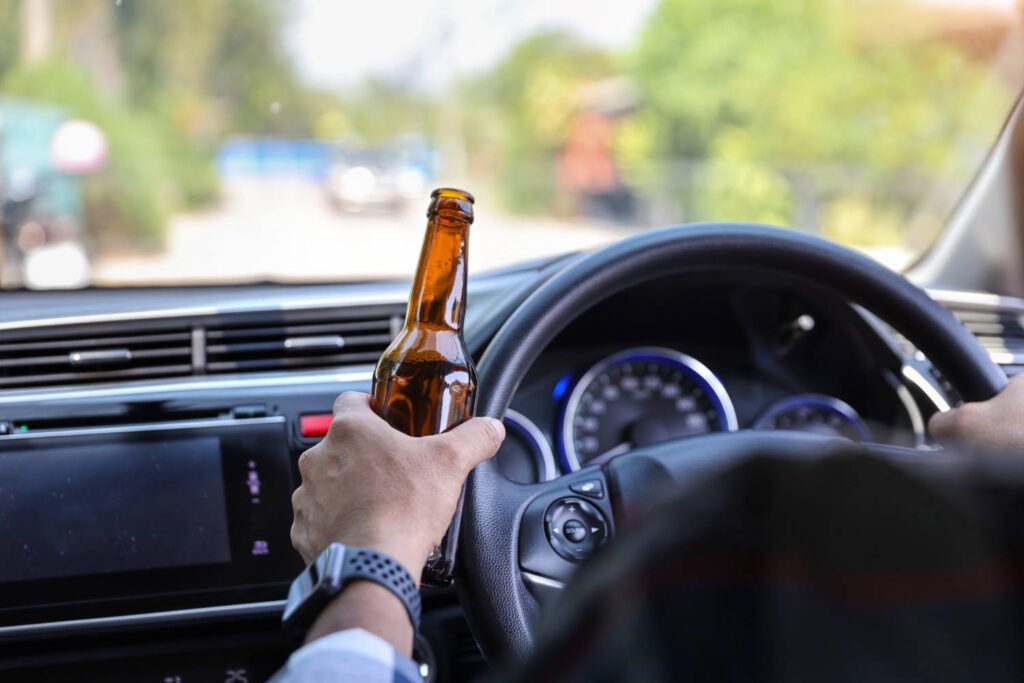Driving under the influence (DUI) of alcohol or drugs remains one of the most dangerous and preventable behaviors on American roadways. Despite decades of public awareness campaigns and increasingly stringent penalties, impaired driving continues to pose a significant threat to public safety across the United States.
Understanding Driving under the Influence (DUI)
In all 50 states, it is illegal to drive while “impaired” by the effects of alcohol or drugs, including prescription medications. “Impaired” means the amount of alcohol or drugs in the driver’s body is medically sufficient to prevent them from thinking clearly or driving safely.
Most states define impairment using blood alcohol concentration (BAC) levels. As the U.S. Department of State’s Office of Foreign Missions notes, “Local jurisdictions establish the levels at which a driver is considered ‘impaired.’ Be aware that many people reach this legal level well before they might be considered ‘drunk.'”
The legal BAC limit in all states is 0.08% for drivers aged 21 and over. For commercial drivers, the limit is lower at 0.04%, and for drivers under 21, states typically have “zero tolerance” laws that set the limit at 0.00% to 0.02%.
However, it’s crucial to understand that impairment can occur at lower levels. The National Highway Traffic Safety Administration (NHTSA) reports that even a small amount of alcohol can affect driving ability. At a BAC of just 0.02%, drivers already experience some loss of judgment and altered mood.
Difference between driving under the influence and driving while intoxicated
The difference between driving under the influence (DUI) and driving while intoxicated (DWI) varies based on state laws across the United States. In states that distinguish between these terms, DWI typically refers specifically to alcohol impairment exceeding the legal blood alcohol concentration (BAC) limit of 0.08%.
DUI, on the other hand, often encompasses impairment from any substance, including drugs, prescription medications, or alcohol at levels that cause impairment but may fall below the legal limit. States that use both terms generally impose more severe penalties for DWI charges, as they indicate a higher level of impairment.
This distinction is not universal, however, as many jurisdictions use only one term to cover all impaired driving offenses. For example, Texas uses DWI for drivers with a BAC of 0.08% or higher, while reserving DUI specifically for minors with any detectable amount of alcohol.
California simplifies its approach by using only “DUI” regardless of the substance or impairment level. Some states introduce entirely different terminology, such as OUI (operating under the influence) in Maine or OWI (operating while intoxicated) in Wisconsin. When researching impaired driving laws, it’s essential to consult the specific legal definitions used in your state of residence or travel.
Driving Under the Influence Laws Across the United States
While DUI laws vary somewhat from state to state, they generally follow similar patterns:
Types of Offenses
DUI laws cover various substances that can impair driving:
- Alcohol: The most commonly enforced impairment, typically measured by BAC.
- Illegal drugs: Including marijuana (even in states where recreational use is legal), cocaine, methamphetamine, and others.
- Prescription medications: Many prescription drugs carry warnings about operating machinery or driving.
- Over-the-counter medications: Some common medications can cause drowsiness or other impairing effects.
Testing Methods
Law enforcement officers use several methods to determine impairment:
- Field sobriety tests: Physical and cognitive tests conducted roadside.
- Breathalyzer tests: Devices that measure alcohol concentration in breath.
- Blood tests: Direct measurement of substances in the bloodstream.
- Urine tests: Less common but sometimes used when other methods aren’t available.
Implied Consent Laws
All states have “implied consent” laws, meaning that by obtaining a driver’s license, you have implicitly agreed to submit to chemical testing if suspected of impaired driving. Refusing to take a test typically results in automatic license suspension, often for a longer period than if you had failed the test.
As mentioned in the “Driving in the U.S.” document, “If a mission member is stopped by a police officer on the suspicion that he or she is ‘driving under the influence’ of alcohol or drugs (DUI) or ‘driving while intoxicated’ (DWI), [authorities] recommend full cooperation with local law enforcement.”
Consequences of DUI
The penalties for DUI offenses can be severe and long-lasting. They typically include:
Legal Penalties
- Fines: First-offense fines typically range from $500 to $2,000, with amounts increasing for subsequent offenses.
- License suspension: Even first-time offenders usually face license suspension for 90 days to a year.
- Jail time: First offenses may result in up to six months in jail, with longer sentences for repeat offenders.
- Probation: Often imposed with or instead of jail time for first offenders.
- Vehicle impoundment: In some jurisdictions, your vehicle may be confiscated temporarily.
- Ignition interlock devices: Many states now require these breath-testing devices that prevent your car from starting if alcohol is detected.
Other Consequences
The impact of a DUI extends far beyond the legal system:
- Insurance consequences: Premium increases of 80% or more are common after a DUI conviction, according to the Insurance Information Institute.
- Employment impacts: Many jobs, especially those involving driving, may be unavailable to those with DUI convictions.
- Professional license issues: Doctors, lawyers, teachers, and other professionals may face discipline from licensing boards.
- Travel restrictions: Some countries, including Canada, may deny entry to individuals with DUI convictions.
- Personal and family strain: The emotional and financial toll of a DUI can severely impact relationships.
Special Circumstances
Aggravated DUI
Certain factors can elevate a standard DUI to an “aggravated” offense with substantially harsher penalties:
- Exceptionally high BAC (typically above 0.15% or 0.20%, depending on the state)
- Having a minor in the vehicle
- Excessive speeding while impaired
- Causing an accident resulting in injury or death
- Driving with a suspended license
- Multiple DUI offenses
Felony vs Misdemeanor
While first-time DUI offenses are typically charged as misdemeanors, many people wonder “is driving under the influence a felony?”
The answer depends on specific circumstances. A DUI can be elevated to a felony charge in cases involving repeat offenses (typically a third or fourth DUI), accidents causing injury or death, extremely high BAC levels (usually above 0.15%), driving with a suspended license, or having a child in the vehicle.
A felony DUI conviction carries much more severe consequences, including longer imprisonment terms, permanent criminal record, loss of voting rights, loss of right to own firearms, and substantial fines and extended license revocation.
Prevention Strategies
The most effective strategy for avoiding DUI penalties is straightforward: don’t drive after consuming alcohol or drugs that may impair your abilities. Practical approaches include:
- Designated drivers: Arrange for a sober driver before you begin drinking.
- Rideshare services: Using services like Uber or Lyft is far less expensive than a DUI.
- Public transportation: In many urban areas, public transit offers a safe alternative.
- Stay overnight: If drinking away from home, consider staying over.
- Know your medications: Be aware of the effects of your prescriptions and over-the-counter drugs.
What to Do If Stopped
If you are pulled over and suspected of DUI:
- Pull over safely and turn off your engine.
- Keep your hands visible on the steering wheel.
- Be polite and cooperative, but remember your right to remain silent about how much you’ve had to drink.
- If asked to perform field sobriety tests, understand that these are voluntary in many states.
- If arrested, contact an attorney as soon as possible.
The Human Cost
Beyond the legal and financial consequences, impaired driving exacts a terrible human toll. According to the NHTSA, about 32 people in the United States die in drunk-driving crashes every day, that’s one person every 45 minutes.
Each of these deaths represents not just a statistic but a life cut short and families forever changed. The ripple effects extend to friends, coworkers, and communities.
Conclusion
Driving under the influence is not merely illegal, it’s a serious threat to public safety and to your own future. The consequences of a DUI conviction can follow you for years, affecting everything from your job prospects to your personal relationships.
With the widespread availability of alternatives like ridesharing services, there’s simply no justification for taking the wheel when impaired. The message is clear: if you’re impaired, don’t drive. The risks to yourself and others are simply too great.


